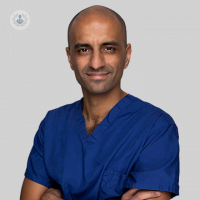Atrial fibrillation ablation: Not the traditional ‘heart operation’
Written in association with:Being told that you need a cardiac-related procedure can be very daunting. Understanding the procedure in question and the overall patient experience can help to ease this process and better prepare yourself for surgery.
Here to provide an expert insight into atrial fibrillation ablation, including the post-procedure recovery period, is Dr Saagar Mahida, leading consultant cardiologist and cardiac electrophysiologist.

What is atrial fibrillation ablation?
Atrial fibrillation ablation is a keyhole interventional procedure used to treat an irregular and fast heart rhythm, called atrial fibrillation. Since the first procedure in the 1990s, atrial fibrillation ablation has evolved to become the most common type of ablation procedure performed in cardiac electrophysiology.
How is atrial fibrillation ablation performed?
An atrial fibrillation ablation procedure involves making a series of small incisions near the groin area to introduce plastic ports into the femoral vein (found at the top of the leg). Catheters (thin wires) are then passed through the ports and guided via the femoral vein up to the heart, where they are inserted.
Once the catheters enter the heart, energy is used to burn targeted areas of the left atrium (the left upper chamber) that are triggering atrial fibrillation. There are different types of energy that can be used, including radiofrequency energy (generating heat) or cryo energy (generating cold).
Due to increasing advances in technology and in surgery, atrial fibrillation ablation only takes over an hour to complete. In certain occasions, atrial fibrillation ablation can even be performed as an outpatient (day-case) procedure.
Given that the pulmonary veins are frequently targeted areas, atrial fibrillation ablation is sometimes referred to as a pulmonary vein isolation procedure.
What can patients expect from the recovery phase post-ablation?
Following atrial fibrillation ablation, patients are recommended to practise light exercise (for example, walking) for the first couple of days after the procedure. The level of exercise can increase gradually after this period.
Patients without physically demanding jobs can return to work three to four days after the procedure. In the UK, patients with a car or a motorcycle license can drive two days after ablation.
Most patients make a full recovery (including practising intense physical exercise) two weeks after atrial fibrillation ablation.
Dr Saagar Mahida is a leading heart rhythm and atrial fibrillation specialist with more than 20 years of experience.
If you require atrial fibrillation ablation and wish to book a consultation with Dr Mahida, do not hesitate to visit his Top Doctors profile today.


